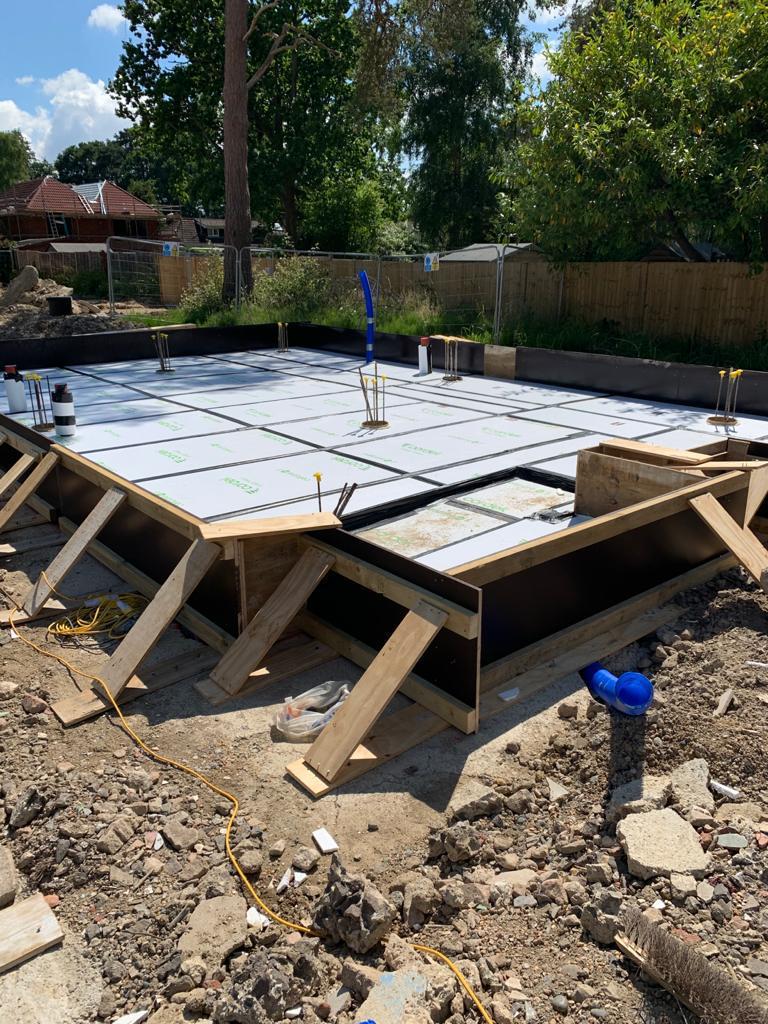Pile Vs Raft Foundation: A Comparative Analysis
December 3, 2024

Pile Vs Raft Foundation: A Comparative Analysis
The pile and raft foundation is used to make the foundation of a building firm. You can use either piled or raft foundation for your building foundation. Alternatively, you can use both piles and rafts for a high-rise building. So, why should you use a pile or raft foundation? Which one is more economical for you? Read on to learn more about the two foundation techniques. In this discussion, you will know the difference between the pile and raft foundation and its advantages and challenges. It will help you to choose the most economical option for your building.
What is a piled foundation?
A piled foundation system uses deep, slender piles to support a building's load. The deep and slender columns transfer the load to a stronger soil layer. The columns can be drilled or bored into the ground. These columns can be reinforced concrete, steel, or timber. Several piles are used to carry the load of the superstructure into the deeper layer of the soil. It is a more complex process of foundation building.
Where is it used?
A piled foundation is used where the surface soil is soft and weak. In such compressible surfaces, settlement can occur in foundations. Multiple deep piles are used to transfer the load of the superstructure into the ground. To calculate the number of total piles, engineers analyze the soil quality, load, and area of the superstructure. It is used to support large building structures, bridges, and industrial facilities.
What is a raft foundation?
Raft Foundation is also referred to as the Mat Foundation. A thick concrete slab is built to carry the load of the superstructure. Generally, reinforced concrete slabs are used to construct a raft foundation. A large-scale raft foundation can distribute superstructure load to a broader area. It reduces pressure on the soil and protects the building from settlement. A raft foundation is also used in combination with piles. A piled raft foundation improves the stability of the building in weak soil.
What is the ideal soil quality to use a raft foundation?
The raft foundation is perfect if the surface is solid. A raft foundation can be built if a shallow load-bearing soil layer is underneath the surface. The homogenous and strong soil makes it a suitable place to use raft foundations. If you plan to construct a reinforced raft foundation, you should conduct a geotechnical analysis. It will let your site engineers understand soil quality and load-bearing capacity.
Things to consider before starting foundation work
Before starting your foundation work, consider several other things, including its cost. It would help if you thought of a geotechnical analysis, pile capacity analysis, total superstructure load, and load distribution analysis.
Soil quality
Geotechnical analysis is the study of soil elements of a construction site. It helps engineers to analyse if the site is strong enough for building loads. Soil conditions and load-bearing capacity can be determined from the analysis. You can construct a piled, raft or piled raft foundation, depending on the soil quality.
Pile capacity
Pile capacity depends on its materials. For example, a steel pile has a higher load-carrying capacity than a timber pile. You should know the capacity of piles before using them for building foundations.
Superstructure load
The load of the superstructure is crucial in determining the foundation type for your building. A strong foundation will help carry a higher superstructure load.
Load distribution
The superstructure load distribution should be equal across the foundation. The site engineer can calculate the number of piles or raft sizes to distribute the load.
Which one is more economical, piled or raft foundations?
In the UK, a piling foundation may cost around £150-£400 per linear meter. You can use driven or bored piles for the foundation. On the other hand, a raft foundation may cost around £200–£260 per square meter. However, you can not solely decide on the cost factor to select the best foundation option. It would be best to consider the soil quality, superstructure loads, etc. After all, the foundation is a one-time investment.
Conclusion
Pile and raft foundations are used for different soil qualities. When the surface is soft and compressible, a piled foundation helps to transfer the load to a deeper and stronger soil layer. However, a raft foundation might work if the surface is hard and strong. If you consider the cost of the foundation, a raft foundation may be cheaper than a piled foundation. However, it would be best to consider soil quality and superstructure loads when deciding on the foundation type. It's best to contact us at the Piled Raft Foundation. We can offer you the best solution for your building foundation.